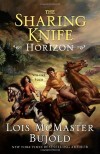 From the front flap:
From the front flap:
In a world where malices—remnants of ancient magic—can erupt with life-destroying power, only soldier-sorcerer Lakewalkers have mastered the ability to kill them. But Lakewalkers keep their uncanny secrets and themselves from the farmers they protect, so when patroller Dag Redwing Hickory rescued farmer girl Fawn Bluefield, neither expected to fall in love, join their lives in marriage, or defy both their kin to seek new solutions to the perilous split between their peoples.
Fawn and Dag see that their world is changing, and the traditional Lakewalker practices cannot hold every malice at bay forever. Yet for all the customs that the couple has challenged thus far, they will soon be confronted by a crisis exceeding their worst imaginings, one that threatens their Lakewalker and farmer followers alike. Now the pair must answer in earnest the question they’ve grappled with since they killed their first malice together: when the old traditions fail disastrously, can their untried new ways stand against their world’s deadliest foe?
Review:
If I didn’t like Dag and Fawn, The Sharing Knife: Horizon would be one of the most boring books I’ve ever read.
Having reached the end of their river voyage, Dag and Fawn pause long enough to witness the marriage of Whit and Berry before parting ways with Fawn’s brother and his new bride and heading to New Moon Cutoff, a Lakewalker camp where a renowned medicine maker, Arkady Waterbirch, lives. There, Dag finds an explanation for some of his abilities that is far more positive than the dark alternatives he’d been fearing and apprentices with the fastidious Arkady for several months.
Arkady is opposed to Dag practicing medicine on “farmers,†but when a child stricken with lockjaw needs his help, Dag goes willingly, knowing that he might be sacrificing the incredibly valuable apprenticeship as a result. The boy survives, but Dag’s actions throw New Moon camp into a tizzy so he decides to head back up north with newly pregnant Fawn rather than succumb to the restrictions the camp leader wants to oppose on him. A little way down the road, he’s joined by Arkady, staging his own protest against the leader’s decision.
Along the way they acquire various traveling companions—farmers and Lakewalkers both—until their party numbers more than two dozen. Dag fashions a trio of necklaces designed to help veil farmers’ grounds and protect them against malices. These are put to the test right at the end of the book when the party stumbles upon a particularly awful malice and Fawn (with help from Whit and Berry) proves again how resourceful and useful farmers can be if allowed to help. The implication is that the tale of this deed will spread far and wide and help foster a sense of cooperation between the two peoples.
Most of the book focuses on what Dag is learning and, true, it can be kind of interesting sometimes. Bujold has created an admirably consistent world for her characters to inhabit, so all of the detail about the healing techniques Dag is learning pretty much makes sense. It’s just that the narrative moves so slowly. I never do particularly well with a story whose whole plot is, “And then they walked a lot,†and that’s essentially what this book becomes in its second half.
Also, there’s too many characters at the end. Some of the new ones are interesting—I’m fond of Dag’s patroller niece, Sumac, and I can see why the half-Lakewalker siblings Calla and Indigo are important as a preview of what Dag and Fawn’s own children might be like—but many are nondescript. It’s easy to forget some of them are even there; I certainly did so more than once.
Ultimately, I did enjoy The Sharing Knife series and, though it’s easy to fault it for being too long and rambly, I don’t have any particular recommendations for how it could be made shorter.


Yeah, I can’t really come up with any suggestions for making it shorter either. I think that the end solution she devised certainly fits the issue, I just really didn’t like the huge pile of people that suddenly appeared. I’m not totally sure how much they added to the narrative except to make the world suddenly feel way more crowded than it had.
Making it shorter would likely involve snipping things like the whole “let’s move the snakes into the stream” scene which, while not very important plotwise, is still kind of cute.
And no, I don’t think the crowd of followers added much. Heh. Now I’m reminded of the Potentials in the second half of the final season of Buffy the Vampire Slayer. Not so dissimilar, really, if you think of them as people who’re supposed to become the main character’s emissaries, in a way.
These books were sort of weird. The world was fully constructed, but I’m not used to a romance story being in a world like that.. with a quest or something plot just sort of thrown in.
I dunno.
You’re right, it’s /very/ like the potentials in Buffy S7. I still can’t tell any of them apart even in the comics. Too many chars introduced all at once with few defining characteristics.
Quite a lot of the chars in Furuba ended up being superfluous as well… though at least they weren’t all /back/ loaded.
True. I was never the biggest fan of Ritsu, but it always bugged me he only appeared in the most cursory ways after the chapter or so devoted to his introduction.